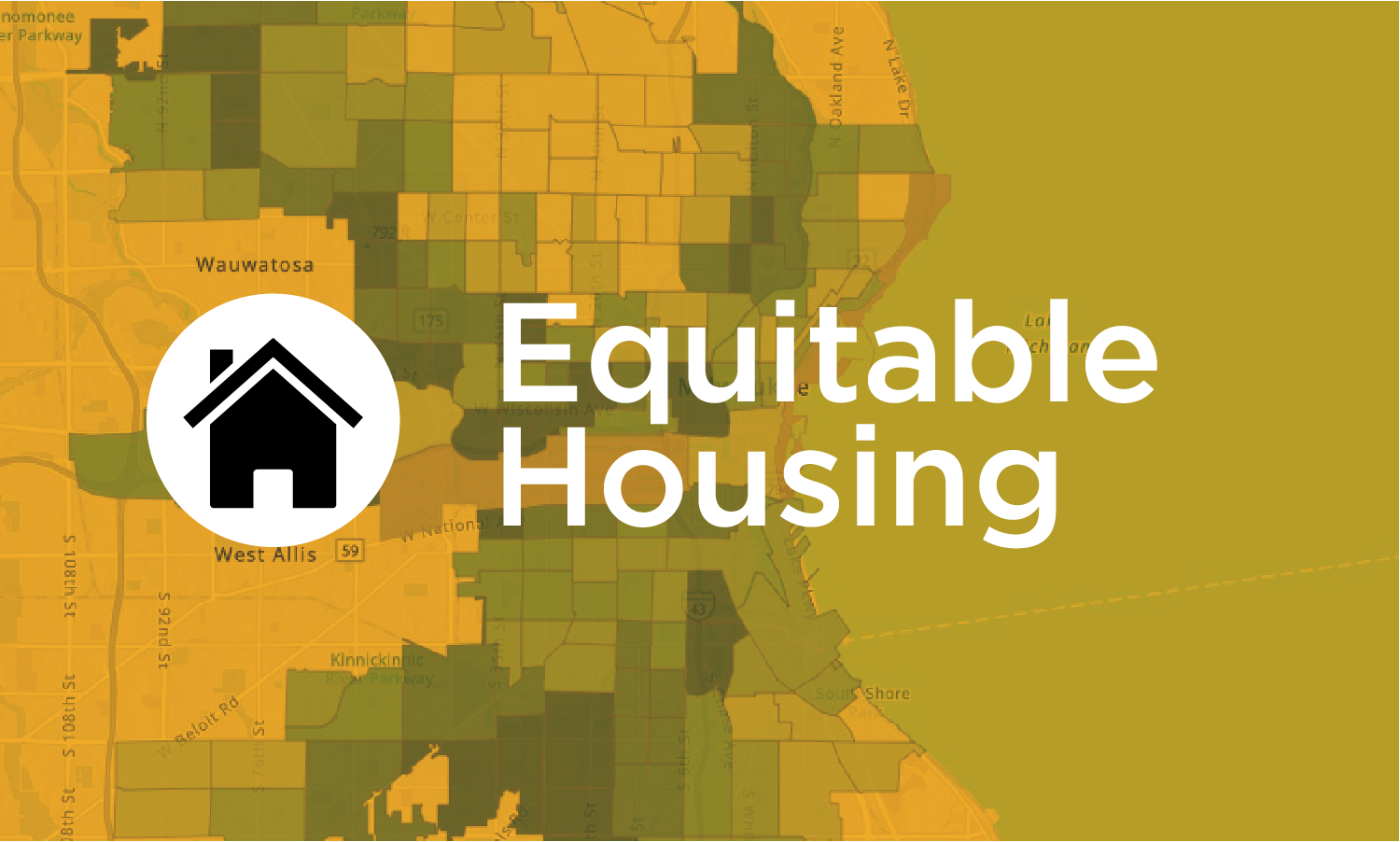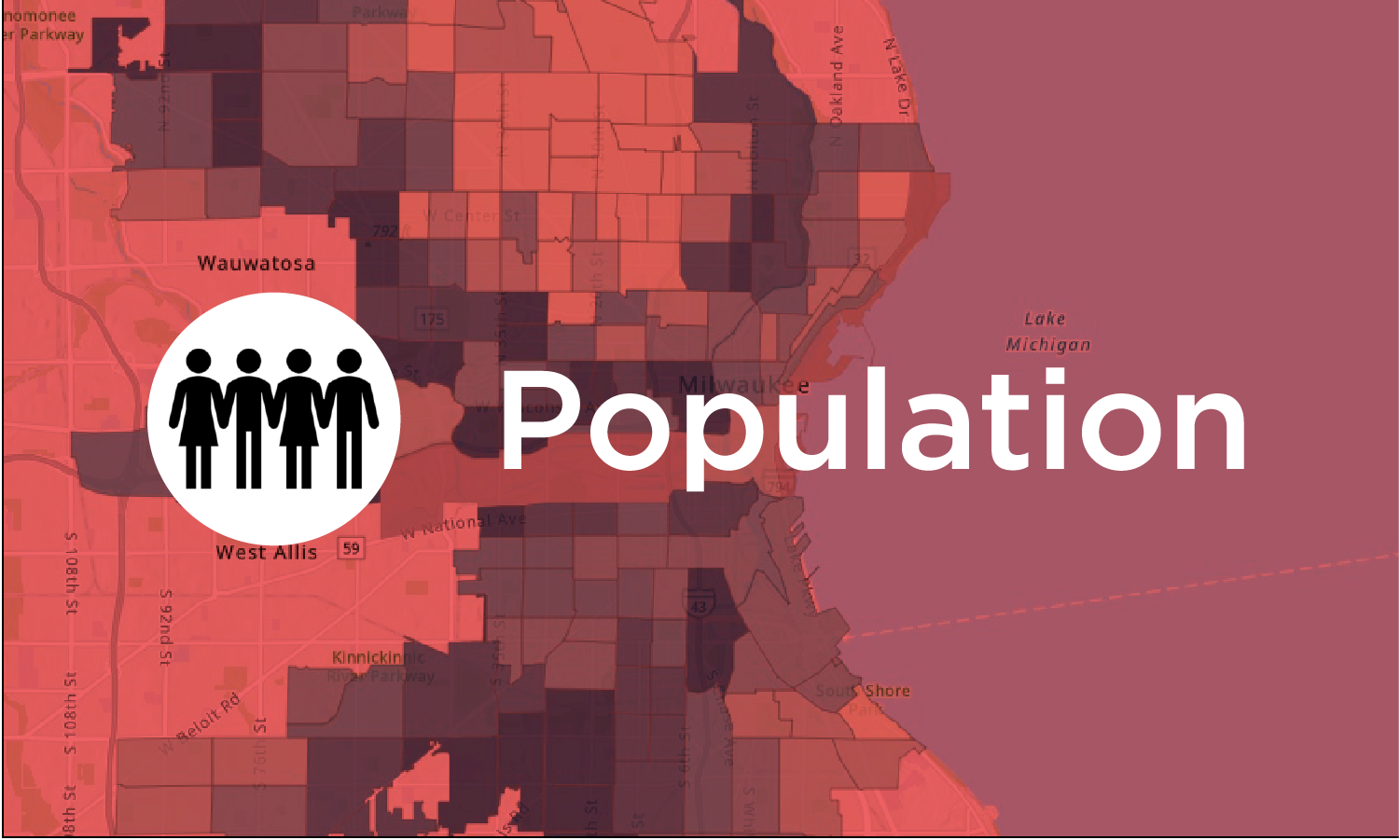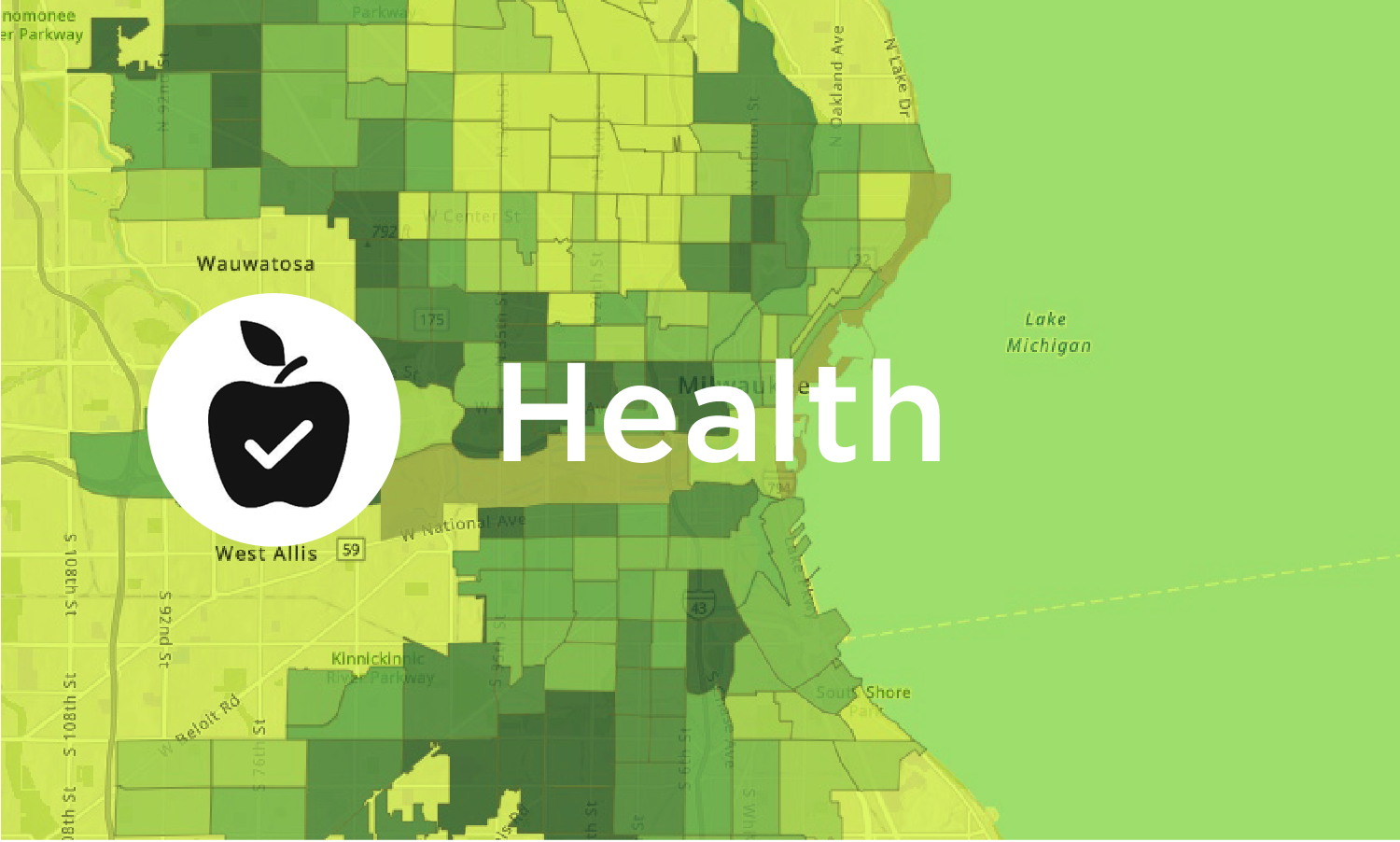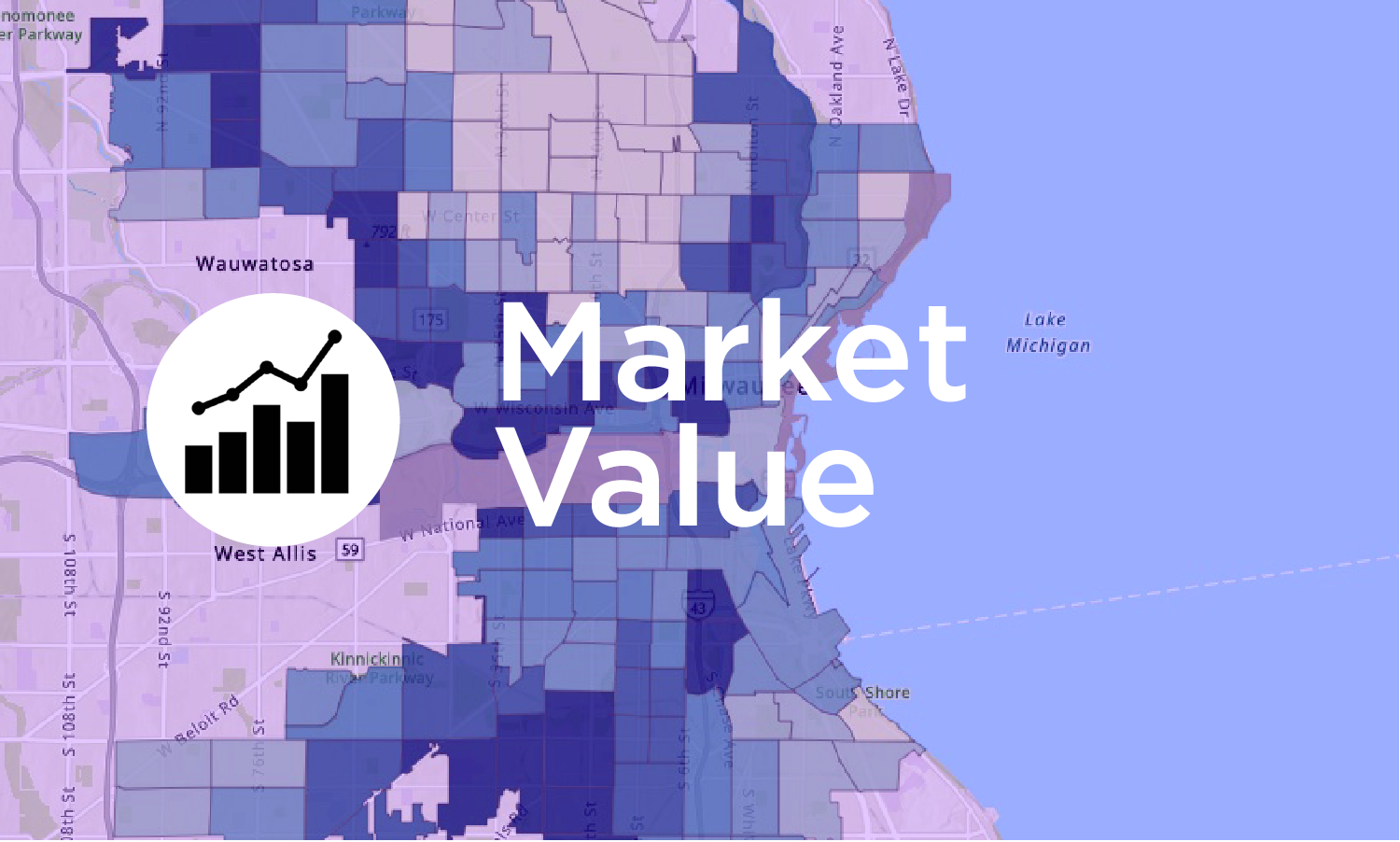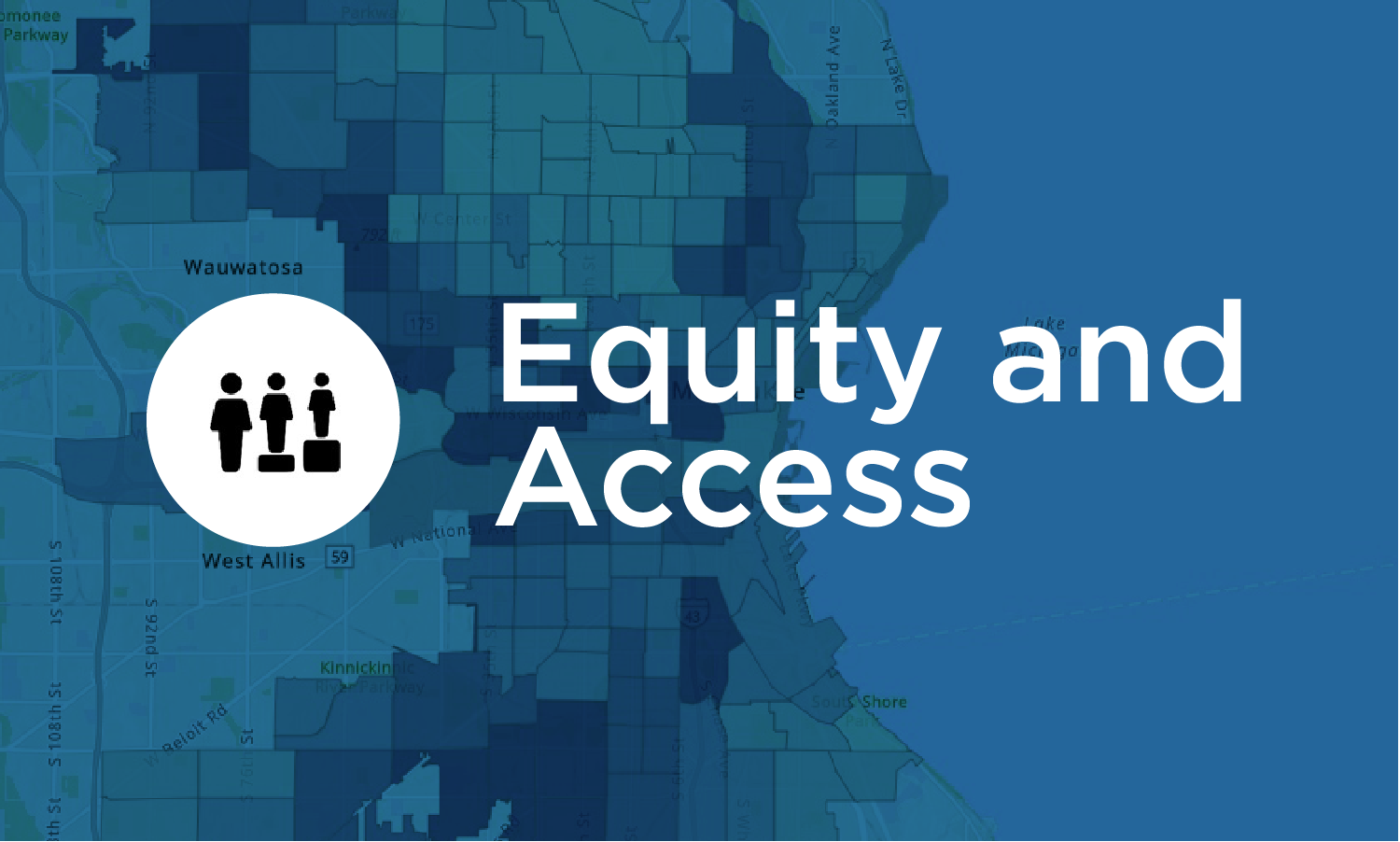MKE Indicators | Data, Resources, Archives
Background
Data You Can Use, in collaboration with the Community Development Alliance, is pleased to host indicator maps for Milwaukee’s neighborhoods. These indicators are intended to help community members, planners, policy makers, and neighborhood organizations to plan, document and explore key pieces of information about their neighborhoods. The indicators have been chosen based on a review of best practice, their importance, and interest to users. Selection followed some defined principles. (Indicator Principles)
In 2013, the city released a map stemming from a market value analysis and including indicators of important market conditions. The MKE Indicators builds on that work but expands beyond physical structures to include other important aspects of a neighborhood. Initially published as a series of ‘flat’ maps, all indicators are now available in interactive formats. An archive of the ‘flat’ maps, released in 2018-2019, can be found at the bottom of this page. In addition, the maps and data from the 2020 and 2024 interactive map releases are located on this page.
Let us know what you think!
We value your opinion. If you have questions or suggestions about the MKE Indicators project, please contact us at [email protected]
2025 Update Data
Below are the individual data files for the 19 indicators updated in the 2025 release. To view all the data in one spot, check out our Summary Data file. This file combines all indicators, as well as some supplementary data. A data dictionary, containing information about each indicator’s definition and source, can also be accessed via the Summary Data File.
Equitable Housing
- Latinx Homeownership – Rate of Homeownership by Hispanic / Latino individuals
- Black / African American Homeownership – Rate of Homeownership by Black / African American individuals
- Rental Housing Cost Burden – Percent of occupied rental units paying ≥ 30% of income on rent
- Access to Broadband Internet – Percent of households with an internet subscription
- Access to Healthy Food* – Prevalence** of adults ages 18 and older who report experiencing food insecurity in the past 12 months
*This indicator is represented by a new dataset in this update. Previously, Access to Healthy Food was measured by the USDA. However, due to limited updates and incomplete data, we decided to shift to the CDC PLACES data to measure food access. As a result, the 2025 data is not comparable to data from previous MKE Indicators releases, as the source and measure is different.
Population
- Black / African American Population – Percent of Black / African American residents
- Asian Population – Percent of Asian residents
- Latinx Population – Percent of Latinx / Hispanic residents
- White Population – Percent of White residents
Market Value
- Vacancy Rate – Percent of housing units that are vacant
- Homeownership – Percent of occupied housing units that are owner-occupied
Equity & Access
- Access to Basic Needs – Percent of households below poverty level
- Access to Employment – Travel Time to work
- Diversity Index – Measure of racial diversity, calculated using a modified Simpson’s Diversity Index [Diversity Index Measure]
Health
- Housing Units Built Prior to 1950 – Percent of housing units built prior to 1950
- Asthma – Asthma prevalence** among adults ages 18 and over
- Obesity – Obesity prevalence** among adults ages 18 and over
- Mental Health – Prevalence** of adults ages 18 and over who reported mental health was not good for 14 or more days
- Visits to Dentist or Dental Clinic – Prevalence* *of adults ages 18 and over who reported visiting a dentist or dental clinic in the last year
**A note about the data: For the PLACES Data, the Center for Disease Control used a multi-level statistical modeling technique to produce small area estimations (SAE). Small area estimations use supplemental data when the sample size of a small geographical area is too small to generate accurate estimates. Specifically, CDC used a peer-reviewed multi-level regression and postratification (MRP) approach that links geo-coded health surveys and high spatial resolution population demographic and socioeconomic data. Additional information about the methodology can be found on the website.
2024 Map Data
Below are the individual data files for all 28 indicators. To view all the data in one spot, check out our Summary Data file. This file combines all indicators, as well as some supplementary data. A data dictionary, containing information about each indicator’s definition and source, can also be accessed via the Summary Data File.
Equitable Housing
- Latinx Homeownership – Rate of Homeownership by Hispanic / Latino individuals
- Black / African American Homeownership – Rate of Homeownership by Black / African American individuals
- Rental Housing Cost Burden – Percent of occupied rental units paying ≥ 30% of income on rent
- Access to Broadband Internet – Percent of households with an internet subscription
- Access to Healthy Food – Percent of population beyond 1/2 mile from supermarket
- Access to Parks – Percent of open park land within the census tract
Population
- Overall Population Growth and Decline – Total Population, Percent Change
- Households with Children and Youth – Households with Individuals under 18 years, Percent change
- Black / African American Population – Percent of Black / African American residents
- Asian Population – Percent of Asian residents
- Latinx Population – Percent of Latinx / Hispanic residents
- White Population – Percent of White residents
Market Value
- Vacancy Rate – Percent of housing units that are vacant
- Homeownership – Percent of occupied housing units that are owner-occupied
- Residential Sales – Median sales price of residential properties
- New Housing Construction and Major Rehabs – Percent new construction and substantial rehab
- Foreclosures – Percent of residential properties that are foreclosed
Equity & Access
- Access to Basic Needs – Percent of households below poverty level
- Access to Quality Schools – School proficiency index [School Proficiency Index]
- Access to Employment – Travel Time to work
- Civic Engagement – Voter turnout rate in last presidential election (2020)
- Diversity Index – Measure of racial diversity, calculated using a modified Simpson’s Diversity Index [Diversity Index Measure]
- Historic Disadvantage – Index based on Home Owner Loan Corporation (HOLC) ratings
This map is posted with permission, and was produced by:
Robert K. Nelson, LaDale Winling, Richard Marciano, Nathan Connolly, et al., “Mapping Inequality,” AMERICAN PANORAMA, ed. Robert K. Nelson and Edward L. Ayers, accessed April 29, 2019,
Health
- Housing Units Built Prior to 1950 – Percent of housing units built prior to 1950
- Asthma – Asthma prevalence* among adults ages 18 and over
- Obesity – Obesity prevalence* among adults ages 18 and over
- Mental Health – Prevalence* of adults ages 18 and over who reported mental health was not good for 14 or more days
- Visits to Dentist or Dental Clinic – Prevalence* of adults ages 18 and over who reported visiting a dentist or dental clinic in the last year
A note about the data: For the PLACES Data, the Center for Disease Control used a multi-level statistical modeling technique to produce small area estimations (SAE). Small area estimations use supplemental data when the sample size of a small geographical area is too small to generate accurate estimates. Specifically, CDC used a peer-reviewed multi-level regression and postratification (MRP) approach that links geo-coded health surveys and high spatial resolution population demographic and socioeconomic data. Additional information about the methodology can be found on the website.
2020 Interactive Maps and Data
Equitable Housing
- Latinx & Black and African American Homeownership – Rate of Homeownership by Black or African American and Hispanic or Latino individuals
- Rental Housing Cost Burden – Percent of occupied rental units paying ≥ 30% of income on rent
- Access to Broadband Internet – Percent of households with an internet subscription
- Access to Health Food – Percent of population beyond 1/2 mile from supermarket
- Access to Parks – Percent of open park land within the census tract
Population
- Overall Population Growth and Decline – Percent Change
- Households with Children and Youth – Households with Individuals under 18 years, Percent change
- Race and Ethnicity – Percent of African American, Asian, White, and Latino residents
Health
- Housing Units Built Prior to 1950 – Percent of housing units built prior to 1950
- Asthma – Asthma prevalence* among adults ages 18 and over
- Obesity – Obesity prevalence* among adults ages 18 and over
- Mental Health – Prevalence* of adults ages 18 and over who reported mental
health was not good for 14 or more days - Visits to Dentist or Dental Clinic – Prevalence* of adults ages 18 and over who reported visiting a
dentist or dental clinic in the last year - A note about the data: For the 500 Cities Data, the Center for Disease Control used a multi-level statistical modeling technique to produce small area estimations (SAE). Small area estimations use supplemental data when the sample size of a small geographical area is too small to generate accurate estimates. Specifically, CDC used a peer-reviewed multi-level regression and postratification (MRP) approach that links geo-coded health surveys and high spatial resolution population demographic and socioeconomic data. Additional information about the methodology can be found on the website.
Market Value
- Vacancy Rate – Percent water shutoff
- Homeownership – Owner occupancy
- Residential Sales – Median sales price
- New Housing Construction and Major Rehabs – Percent new construction and substantial rehab
- Foreclosures – Foreclosure as % of sales
Equity & Access
- Access to Basic Needs – Percent below poverty level
- Access to Quality Schools – School proficiency index
- School Proficiency Index
- Access to Employment – Travel Time to work
- Civic Engagement – Voter turnout rate in last presidential election
- Diversity Index – Simpsons Diversity index
- Diversity Index Measure
- Historic Disadvantage – Index based on HOLC ratings
This map is posted with permission, and was produced by:
Robert K. Nelson, LaDale Winling, Richard Marciano, Nathan Connolly, et al., “Mapping Inequality,” AMERICAN PANORAMA, ed. Robert K. Nelson and Edward L. Ayers, accessed April 29, 2019,

